January 2016 –I love every wine available by the glass (BTG) at Mudgie’s. I know this is self-serving, but it would be just as true if you wrote this list and if you served lunch here. Anyway, if you eat and drink at Mudgie’s, you are directly participating in the process of selection, even if you opt for Hamm’s and a water.
Granted, for someone this jaded to be so excited about every item offered, the list will necessarily be brief. You could say short. There are six specified wines, plus one always-changing wild card. That’s seven wines, plus estate-grown cava on weekends. Call it concise.
Here’s the improbable thing. Every single one of the “permanent” six belong to the most mainstream of call-categories: Sauvignon, Chardonnay, Sweet White, House Red, Pinot Noir, Cabernet Sauvignon.
And without undermining the compelling appeal of these call wines, the seventh ad hoc selection is the biggest call category of them all. The non-call. The deviant. The subversive. #7 is dedicated to provide an example of the benefits of violating mass market categories.
Let’s go through this item-by-item, shall we?
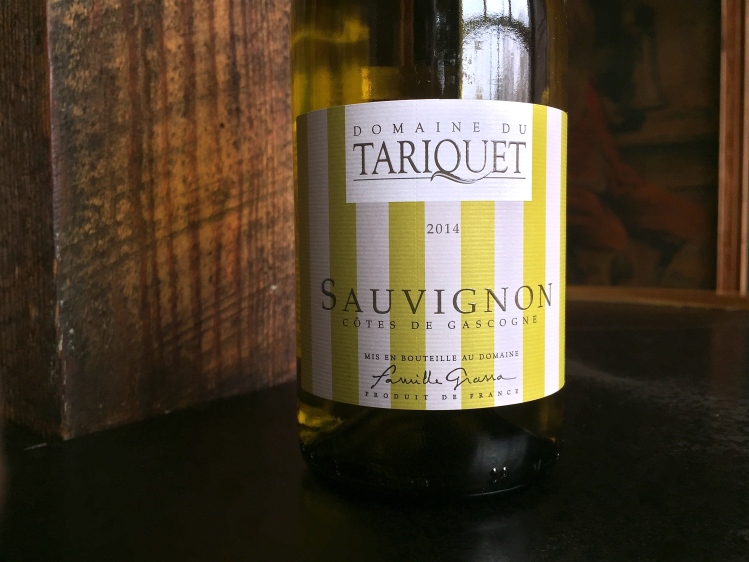
Sauvignon is misunderstood. It is a workhorse in the vineyard. It is assertive and polarizing. It tends to get caught in a self-reinforced cycle of industrial farming and potent aroma branding. The biggest dumbest Sauvignon wines reek of grapefruit. This obviousness is easily compatible with short, shallow wine-splanations, and so the call is made. Meanwhile, the domineering grapefruit character is a convenient symptom of shortcuts in production. Rinse. Repeat.
Great Sauvignon is some factor of rare and expensive that keeps it completely out of the lives of willing and curious wine drinkers. (Looking at Domaine Edmund Vatan.)
Without knowing too much about this estate in particular, I give some credit for this wine to the importer, Robert Kacher. I remember him vociferously defending another one of his Cotes de Gascogne – Domaine du Pouy – in a meeting in 1998. He explained the importance of, and his insistence on, fruit triage – the sorting of pristine grapes after a massive harvest. The massive harvest? It explains the suspiciously low price. It’s the sorting that explains the startling quality.
2014 Sauvignon from Domaine du Tariquet demonstrates the kind of unlikely balance that make you giggle watching acrobatics. On some days the flavors display an underbrush of savage grass and wild berry flavors. On top, you can find that elusive characteristic of very ripe sauvignon fruit; I call it apricot. Clos Roche Blanche exhibits this best of all. And all of this is integrated and spontaneous, not imposed and abrupt.
It’s possible that “expert” tasters – captured unknowingly by industrial aesthetics – will penalize this wine for lacking what they have been conditioned to call “typicity.”
This Sauvignon wants to be warmed up a little and served with a Done Runnin’, a Salmon Reuben, or a salad add salmon. $7 per glass.
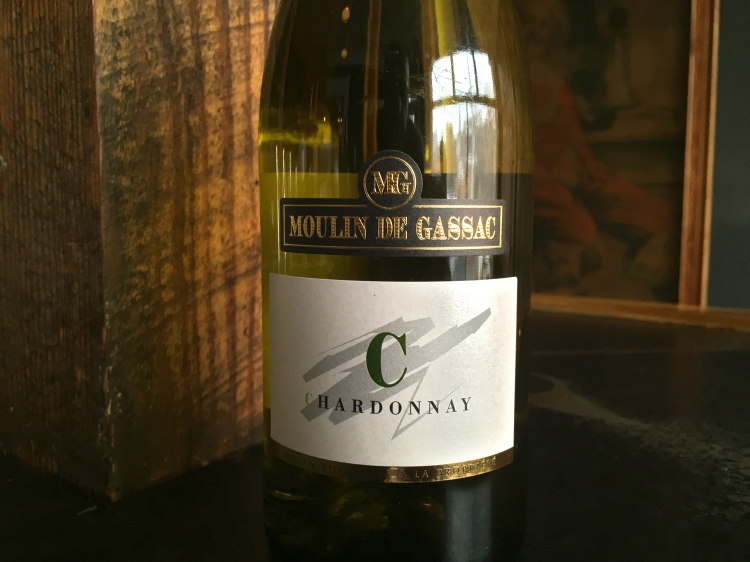
If it were only for demand, and if we could escape the logic – at ordinary price levels – that a mainstream white wine should clobber one’s senses with impressions of Skittles and buttercream, things that are easy to produce at scale. If we could stop somewhere halfway to Txakolina farmed by antique Europeans and enjoy a normal, wholesome and brilliant white wine, made with Chardonnay grapes. This would be it.
If anything is holding this wine back commercially it is that it actually defies several different and opposing categories known as “Chardonnay.” It is un-oaked, so it isn’t buttery or toasty. But nor is it a pile of unlikely primary fruit flavors and boosted acidity that typify the legitimate commercial category known as “Un-oaked Chardonnay.” Reaching into the periphery for other vague and misunderstood variations, it is not “French Style,” nor “Burgundian.”
Like the Sauvignon above this wine is carefully sourced but from a large source of physiologically ripe Chardonnay fruit, in the Languedoc. It’s like Santa Barbara or Napa but with longer periods of daylight in the summer. And then this producer, apparently for reasons of pride, took the time to actually let the wine finish turning into wine. It is not estery or sulfury.
It’s 2014 and it is beautiful! Enjoy with a Tony’s Ceasar Wrap, a Jerk, or a Southwestside Story (add bacon) $7 a glass.
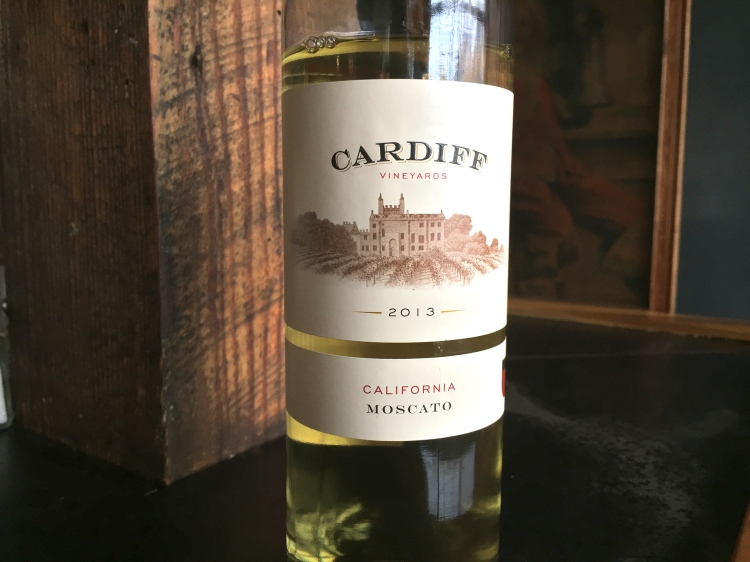
We are told that Muscat Alexandrine is the good Muscat. In reality, all of them are good. The problem is that most of them lend themselves to calculated mass production. (See M&R Spumanti.) That is like blaming the victim.
I take this to be strictly commodity grade fruit at a depressed/subsidized price, possibly farmed in the Central Valley of California. No other set of conditions should produce such a gem for a mere $5 per glass ($10 bottle, or $5 bottle carryout.)
For many years now the cool somms have been enjoying glacial rates of success pushing trendy German Rieslings on people who only know they don’t hate natural sugar. That seems like an awfully narrow slot. Maybe it depends on the menu. Sure, if I were pairing tender fresh grouper, or mustard and seasonal asparagus, with a wine, I’d demand a glass of Willi Schaeffer, or Hans Wirsching Riesling Spätlese.
But with chipotle mayo and smoky bacon flavored Stinson ham sandwiches, I want Cardiff Moscato. (Or possibly hard cider.) It tastes like spice and orange blossoms. I’ll take two bottles home for a total of $10 and get even more stupid.
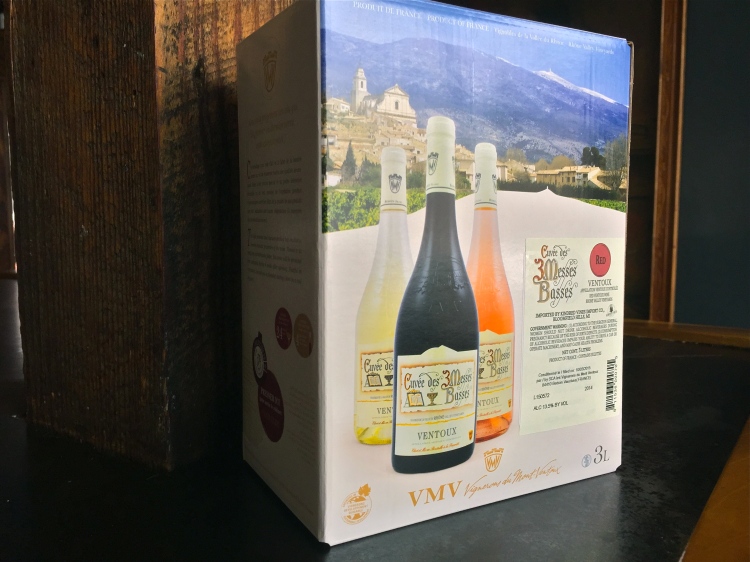
You are reading this blog. May I assume I don’t need to explain that wine in a 3-liter bladder, in a cardboard box, can be of any intrinsic quality? If this packaging is associated with junk, well that’s an indicator of the lack of imagination of marketers and shippers, or even poorly cared for consumer behavior blocs.
This wine is as elegant as it is simple. I’d characterize it as Mediterranean to anyone looking for vague categories such as Italian, or Spanish, or French. It is one of the few wines that pair well with salumi/charcuterie/olives/cheese boards. Any sandwich with salami, or Yale Bologna is apropos.
One objection to confront is the association with the Rhone valley with corpulent, artificially concentrated testosterone wine. Hey, the Rhone is a big place. And there can be countless late-picked, saignee bled, rotofermented and microbullaged 90 pointers without impinging on the supply of ruby red bistro quaffers like this. $5. Also found at several other area restaurants. It’s a unanimous unifier!
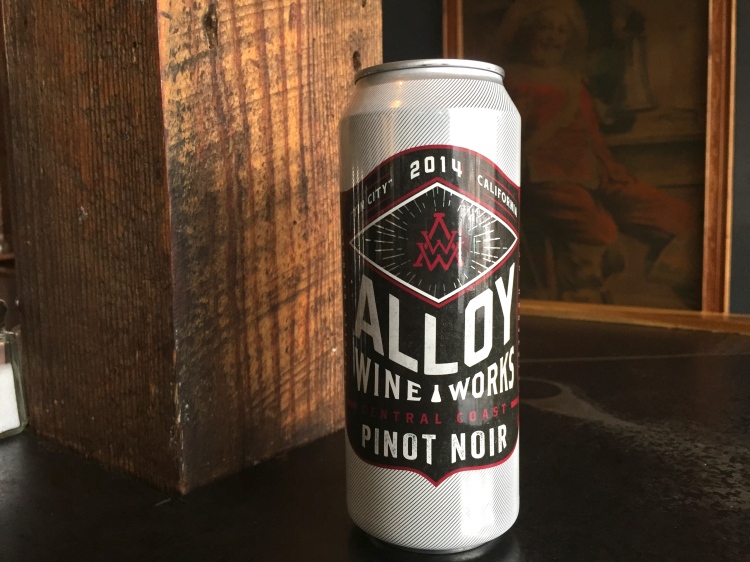
Wine in a can. I get it. The person who wrote this list is a smug asshole. He is making fun of us. This must be some kind of reverse-Sideways inside joke. I can hear the Anti-Miles – or is it Miles 2.0 – “We are not drinking any fucking Pinot Noir!”
This is what you get when you allow a talented nurseryman make and package the wine in the Central Coast. Naked, buxom, utterly unfazed displays of ripe and beautifully typical fruit.
I was skeptical at first. I typically drink Kafkaesque, brooding, French and Italian wines. This was too obviously appealing … at first. Then the native qualities started to accumulate in my brain. On what basis can I dismiss this? Is it typical of Pinot Noir? Yes. Does a can left open for two days taste just as good, or better, than one open immediately? Yes. These were significant achievements at any price, let alone at $7 a glass at a Detroit deli.
Eventually I found I was allowing the novelty of the can format to ruin my buzz, and just like that – liberation.
Serve with anything including redskin potatoes, like a That’s Jared, or a side of potato salad.
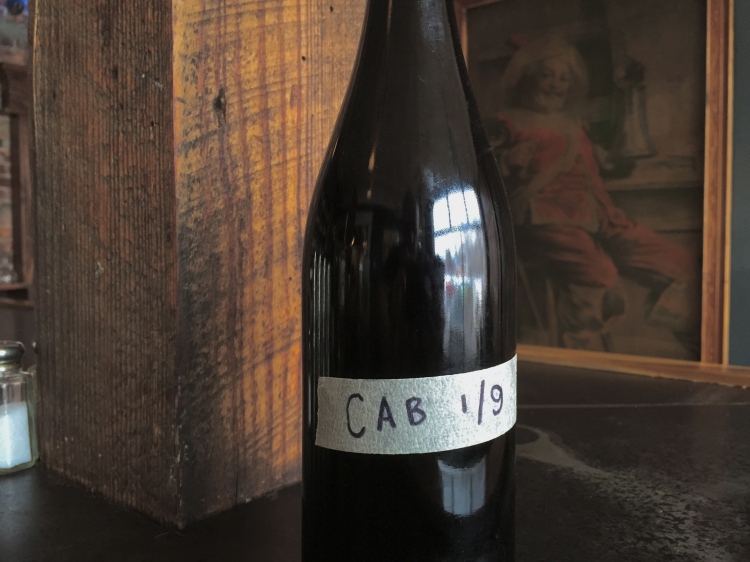
This might be the best wine one the list, and the most surprising. Some of us thought we might never enjoy a Cabernet Sauvignon again for less than $10 by the glass. And why force it. There are so many other varieties untouched by the distortions that affect this most blindly of all called-for categories.
After lots and lots of tasting, and drinking, I actually found two Cabs, that tasted like Cab. One was from old Lodi vines, and it was expectedly plump and satisfying. The only trouble was, as days and weeks went by, it couldn’t really hold my interest. Sometimes that’s the tradeoff for wines of immediate appeal.
Then we found a Languedoc Cab, that also tasted like Cab! We were close to making the switch to it. It was robust, and structured, and stony, and dry. I wondered, in spite of its integrity, and compatibility with food, is it fun enough? Will it serve as a drink without food?
And then the lightbulb lit up. Try both wines in the same glass. With no sacrifice of varietal typicity and with all the benefits of each, the mixture was the best of all possible worlds. I tried it on jaded red wine drinkers who were trained to avoid Cab. They seemed to like it. I know because they ordered second glasses. Then I drank it, and as I did I grew to like it better and better.
Is it inky and powerful? No. And some people will firmly believe that Cabernet Must always be these things. This is a drinkable Cabernet Sauvignon. And it runs $6 a glass.
I’ll give you the recipe. I’ll sell you the ingredients. Go ahead. Experiment at home.
_____________________
As for the seventh wine, I have in mind some bigass Costieres de Nimes, some articulated Grüner Veltliner, Txakolina (of course) and maybe even a flor-aged rose from Provence. We can make the selection together.
2 thoughts on “Neighborhood Wine – Mudgie’s Part 2”